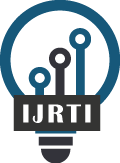|
International Journal for Research Trends and Innovation
International Peer Reviewed & Refereed Journals, Open Access Journal
ISSN Approved Journal No: 2456-3315 | Impact factor: 8.14 | ESTD Year: 2016
Scholarly open access journals, Peer-reviewed, and Refereed Journals, Impact factor 8.14 (Calculate by google scholar and Semantic Scholar | AI-Powered Research Tool) , Multidisciplinary, Monthly, Indexing in all major database & Metadata, Citation Generator, Digital Object Identifier(DOI)
|
Issue: December 2025
Volume 10 | Issue 12
Review Result and Publication of Paper within : 2-3 days
Click Here For more DetailsFor Authors
Forms / Download
Published Issue Details
Editorial Board
Other IMP Links
Facts & Figure
Impact Factor : 8.14
Issue per Year : 12
Volume Published : 10
Issue Published : 115
Article Submitted : 19876
Article Published : 8130
Total Authors : 21488
Total Reviewer : 774
Total Countries : 147
Indexing Partner
Licence
This work is licensed under a Creative Commons Attribution-NonCommercial 4.0 International License







|
Published Paper Details
|
|
| Paper Title: | The female labor force participation rate and India`s economic development: tracing the U feminization hypothesis |
| Authors Name: | Poluru Divya sai , BRAHMANDAM LAKSHMI KAMESWARI |
| Download E-Certificate: | Download |
| Author Reg. ID: |
IJRTI_183476
|
| Published Paper Id: | IJRTI2208029 |
| Published In: | Volume 7 Issue 8, August-2022 |
| DOI: | |
| Abstract: | During the last twenty years, India has witnessed consistent economic growth, despite a continuous drop in female labor force participation rate. This paper analysis delves into the widely held Feminization Hypothesis or the U-shaped theory of Female Labor Force Participation Rate in India. The hypothesis describes an India's U-shaped link between economic development and female labor force participation rate. The paper examines the critical factors that affect the Female Labor Force Participation Rate in India and then creates an econometric model using Excel and XLSTAT based on World Bank data from the previous two decades (1990-2020). The findings indicate that there are no significant relationships between economic development and female labor force participation rate (FLFPR), which contradicts previous studies conducted in other parts of the world. These findings are especially important for developing policies to increase women's labor-force participation rates so that India can fully benefit from its upcoming demographic dividend. The main objective is therefore to enhance female labor-force participation, and also to maintain an atmosphere that provides independence and possibilities for women to obtain respectable and honorable work, which would also directly contribute to employment generation and thorough development of women, making sure inclusivity in the Indian labor market. |
| Keywords: | Female Labor Force Participation Rate, U shape hypothesis, Economic Development, Heteroskedasticity, Normality tests. |
| Cite Article: | "The female labor force participation rate and India`s economic development: tracing the U feminization hypothesis", International Journal of Science & Engineering Development Research (www.ijrti.org), ISSN:2455-2631, Vol.7, Issue 8, page no.169 - 182, August-2022, Available :http://www.ijrti.org/papers/IJRTI2208029.pdf |
| Downloads: | 000205254 |
| ISSN: |
2456-3315 | IMPACT FACTOR: 8.14 Calculated By Google Scholar| ESTD YEAR: 2016 An International Scholarly Open Access Journal, Peer-Reviewed, Refereed Journal Impact Factor 8.14 Calculate by Google Scholar and Semantic Scholar | AI-Powered Research Tool, Multidisciplinary, Monthly, Multilanguage Journal Indexing in All Major Database & Metadata, Citation Generator |
| Publication Details: |
Published Paper ID: IJRTI2208029
Registration ID:183476
Published In: Volume 7 Issue 8, August-2022
DOI (Digital Object Identifier):
Page No: 169 - 182 Country: OLD RAJENDRA NAGAR, NEW DELHI, India Research Area: Social Science and Humanities Publisher : IJ Publication Published Paper URL : https://www.ijrti.org/viewpaperforall?paper=IJRTI2208029 Published Paper PDF: https://www.ijrti.org/papers/IJRTI2208029 |
| Share Article: | |
|
Click Here to Download This Article |
|
| Article Preview | |
|
|
|
Major Indexing from www.ijrti.org
| Google Scholar | ResearcherID Thomson Reuters | Mendeley : reference manager | Academia.edu |
| arXiv.org : cornell university library | Research Gate | CiteSeerX | DOAJ : Directory of Open Access Journals |
| DRJI | Index Copernicus International | Scribd | DocStoc |
ISSN Details
 |
 |
ISSN: 2456-3315
Impact Factor: 8.14 and ISSN APPROVED,
Journal Starting Year (ESTD) : 2016
DOI (A digital object identifier)
 Providing A digital object identifier by DOI.ONE How to Get DOI? |
Conference
Open Access License Policy
Important Details
Join RMS/Earn 300
WhatsApp
Click Here
Click Here
Indexing Partner |
|||
| Copyright © 2025 - All Rights Reserved - IJRTI | |||






